High-impact Social Media Management Strategies for Your Business
Author & Editor
Social Media Team Lead
Published on: Mar 15, 2022 Updated on: May 22, 2024
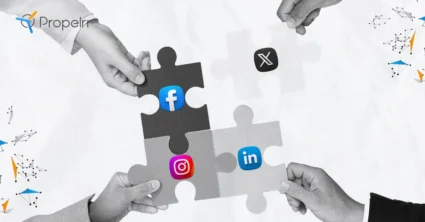
Table of Contents
Your social media management means nothing to your business.
“Wait. What?”
“But that’s absurd!”
Realistically, social media management and marketing is always part of any digital campaign discussions we have with clients. This, of course, is a complicated topic. Though conceptually simple, social media is one of the most misunderstood marketing platforms.
It is, perhaps, not your fault. With stories cropped to 140 characters and conversations abbreviated to emojis, how do you take advantage of social media?
Time to jump away from vanity and face-value marketing to data-driven and conversion-based marketing. As elusive as it may sound, it is never impossible. I have put together commonly snubbed social media marketing strategies. Read on and slither your game plan in place!
Being All Over the Place, But Not Everywhere
The landscape seems endless and there is a persistent uncertainty on where to focus. This can be overwhelming; maybe too much for some businesses to handle.
If you have the ability to leverage your brand through different media, like e-books, podcasts, blogs and other social media platforms, then that is more than awesome! However, more often than not, the truth is much less glamorous.
Imagine this: You sell tissue papers. Would you want to place all your tissue rolls and tissue boxes in every grocery stall and shelf? Say, fruit section, poultry and vegetables. Weird? Very. Same logic applies in social media.

Looks awkward? Very.
In fact, 23% of brand marketers are developing social media strategies but are still struggling to execute it.
Interestingly, this tactic seemed to be working for some legacy brands. Taco Bell, for one, seems to be all over social media. They’re on Facebook, Twitter, Instagram, Snapchat, YouTube, Pinterest, Vine, Google+ and LinkedIn.
All their social media pages send out snarky and fun posts for the public to see and engage in. Moreover, Taco Bell uses a very humanistic approach that even I can connect with as if we were lifelong friends. The question is: why is their “being all over the place” tactic working? It is because they are everywhere, man.
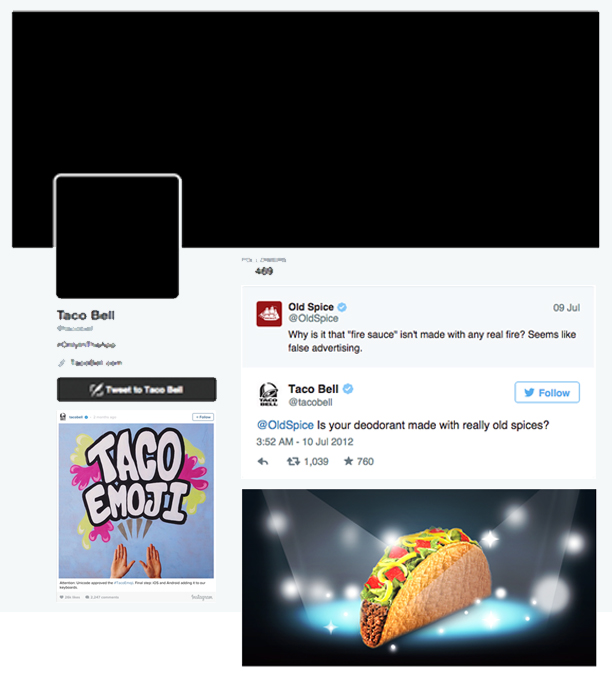
What the…! Yeah, I heard that. Being all over the place does not equate to you being everywhere. Why so? Brands tend to change depending on where they are. Brands spread themselves thin, allowing things to fall through cracks. Assemble yourself into a whole, then go to your audience. Taco Bell exists everywhere and manages to keep their voice consistent wherever.
Those humorous banters and snarky posts are what really pulls in their target market. They’re killing it! A 52-year-old fast feeder, serving billions of customers each year, proves that social media is theirs. Keep in mind the taco emoji! Oh, their sales? Solid sales, indeed.
Undeniably, online presence is a lot like your real world reputation—not only will people judge you based on it, but they will greatly disdain you if they cannot find you. Now, you ask, who is “you“? If you are not sure where to invest your money, time, and effort, then ask yourself the following:
- What are my objectives?
- Who are my target audiences, really?
- What is their buying behavior?
- How is their online and offline media consumption?
- What are their pain points?
- What are they saying about my brand, my product, and my competitors?
Let us use different competitive landscapes or business models to illustrate how you can choose the dominant channels for your business.
First, Retail Industry, specifically the food. Let’s take Jollibee, McDonalds, KFC and the likes for reference. Looking at a high level social media matrix for this landscape, Retail Food brands have consistent presence on Facebook, Twitter, and Youtube.
In the Philippines, it is not surprising that Facebook and YouTube top the list.
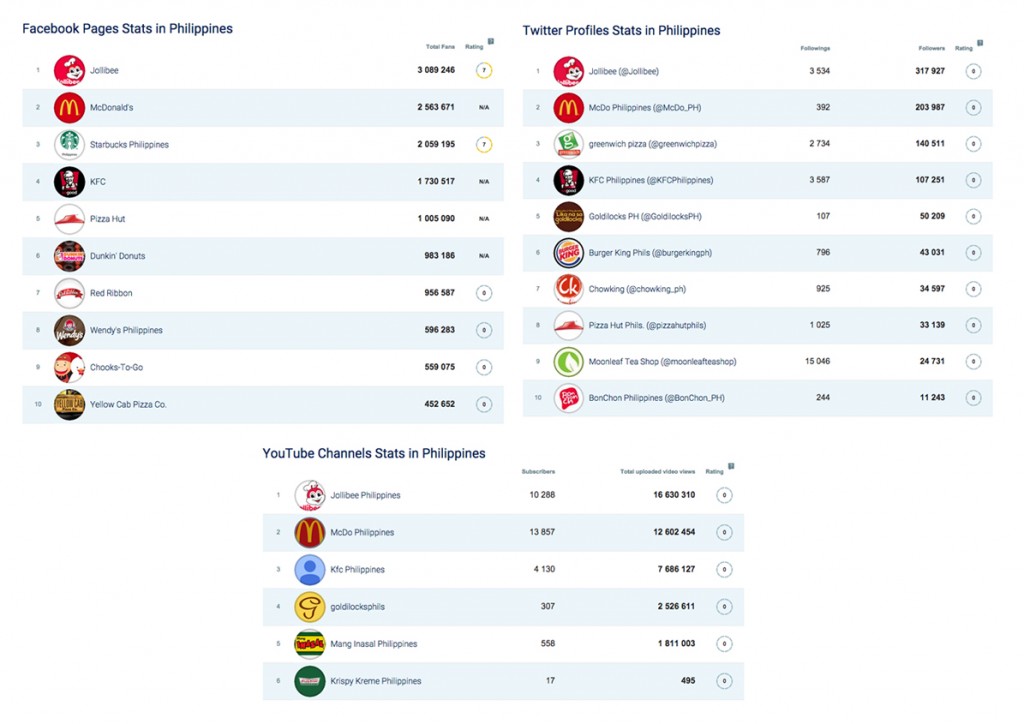
Screenshots from Social Bakers
That is for B2C. How about for B2B?
More often than not, B2B wants to establish credibility and reach corporate audiences on LinkedIn, where peer networking and industry-specific ideas are being shared and discussed. To put this in the right perspective: a staggering 63% of marketers rate LinkedIn as the most effective platform for B2B social media, and that up to 80% of B2B leads come from LinkedIn.
When deciding for your business, you might want to look into the high-level process below. This can help you decide on the best-working platforms for your business model and industry landscape.
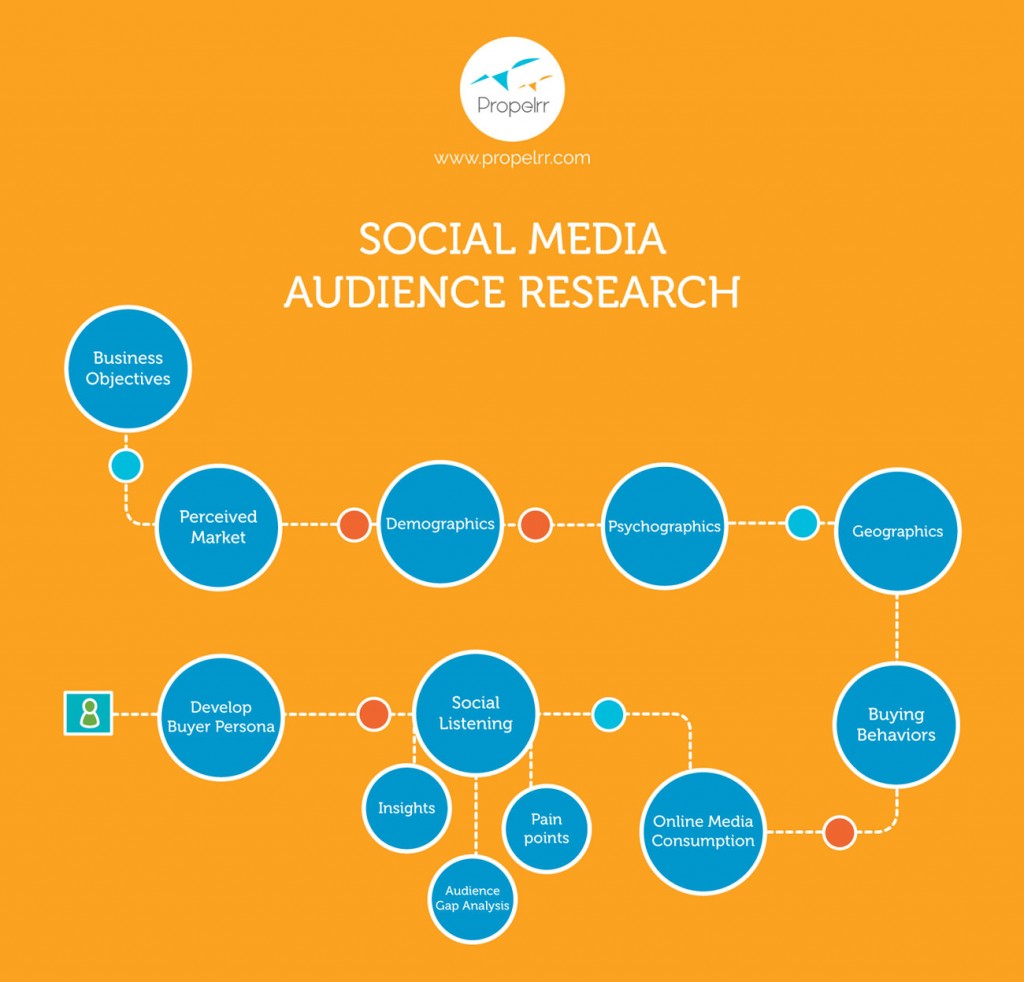
Preserve historical data and analyze it with real-time data
With social media becoming the watercooler and town hall around which people share life events, experiences, grievances, and preferences, it can be used to analyze everyday life and practically every aspect of the community. It is fascinating to see little and ephemeral thoughts being shared on a large scale.
It is not an understatement that data, alongside social media, have helped businesses make rational decisions and take calculated risks from the past. With businesses threatened by low margins, uncertain economic outlook, changing trends and new players in the industry, analyzing data becomes a requirement to effectively and efficiently retain their competitive position in the marketplace. For many, however, analyzing data for its own sake has been a costly exercise with varying degrees of ROI.
At Propelrr, we have developed a data management tool that moves data to business operations — from historical to real-time and descriptive data to predictive and prescriptive actions. To illustrate this in practice, one of our biggest clients, JanSport Philippines, wanted to compare historical data versus present and real-time data.
This is to identify optimum strategy, campaign plans, monthly trends, and norms. Findings help the brand develop more timely, relevant and impactful marketing campaigns. These also optimize media expenditures and even geographical touch points.
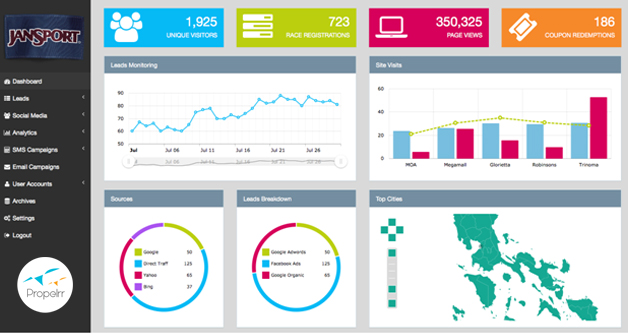
Photo courtesy of Propelrr
Now the question is: with the countless data points available, which ones matter most to you? There is no universal answer to it as that depends on your business or campaign objectives. Given massive data, exploiting and creating opportunities out of it are one of the key determinants of future success.
Social media is a revenue-generating tool
Our traditional understanding of social media marketing is narrow: We grow our fan base, we post updates and every once in a while, when things get really bad, we’re forced to engage. What happens as a result of this is a very little understanding of social media as a revenue-generating tool. Instead, we shoehorn its functionality into exceedingly narrow spaces and this creates problems.
You waste money. You burn resources. You let go opportunities. Regardless, we’re good at convincing ourselves that these flashy, sometimes useless and badly thought-out venture to different social media channels are necessary.
More than being a powerful catalyst on community building, social media is an unignorable powerful sales channel. Talking about fantastic conversions in the US alone, 91% of people have gone into stores because of online promotion. It was found in a recent report from Deloitte that 47% of millennials, the current age group with the highest purchasing power, are influenced in their purchases by social media.

Social media offers businesses and publishers with a variety of revenue models. It can be advertising, virtual goods, subscription, E-commerce or freemium models or more. Many businesses are taking advantage of it.
For example, users on Instagram can easily purchase their favorite product by just commenting on the post, then sending an invoice to the business owner to complete the transaction. Instead of redirecting shoppers to a website, they can buy it uninterruptedly within their news feed. Product purchase on social media increases demand and social proof that helps boost conversion rates.
Another real-life example of social media revenue model is couponing. This sales activation tactic is widely used by businesses with physical stores, established E-commerce websites or mobile applications —an equally amazing move to keep up with small businesses taking advantage of direct transactions from social media.
The North Face, a premium brand for outdoor apparel, equipment and footwear, recently executed digital couponing using integrated social media campaign. Here’s how Propelrr did it with The North Face Philippines.
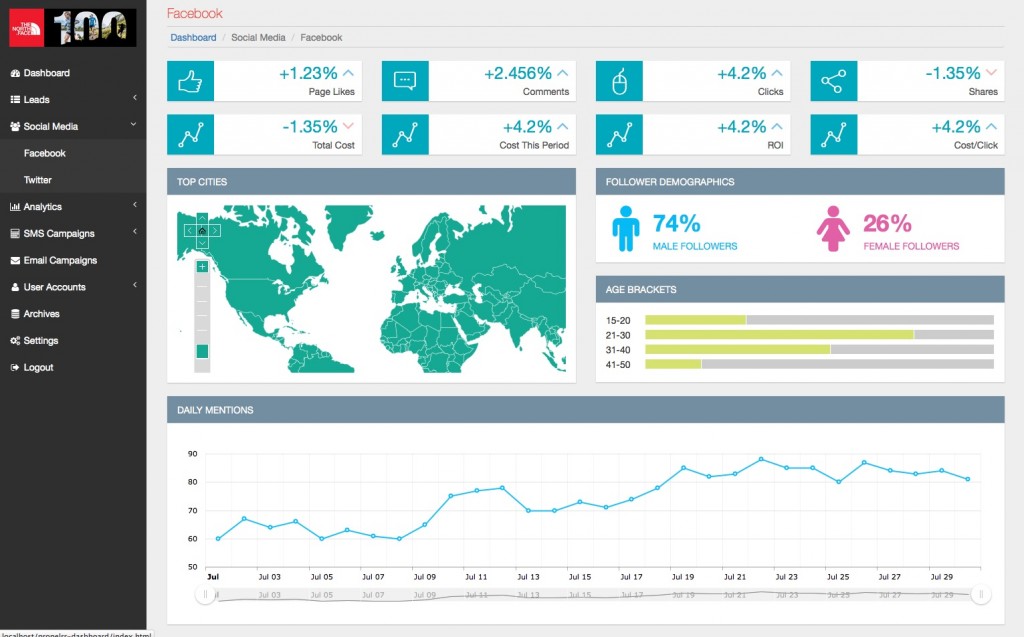
The result? Dare not to yawn.
Using a nonlinear marketing strategy, The North Face Philippines reached nearly half a million revenue from digital couponing alone and a staggering 9 million lead lifetime value. Moreover, it has earned over 11 million social media value. Did we answer your question on how to make social media a sales channel, with a very real and tangible return on investment?
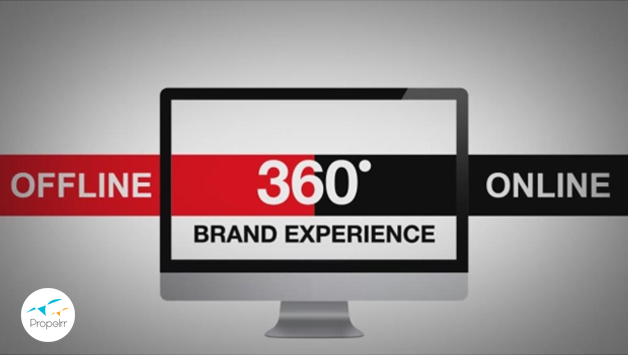
Not calculating your social media value
I remember a few months ago, I came across a colleague who has been managing social media for years now. She asked me how I can increase a brand’s followers from 10,000 to a million and how I value them. As an involuntary response, I almost laugh but managed not to.
Out of curiosity, I asked who came up with the numbers and why they need a million followers. Without having second thought, she responded that it is part of their business goals. I, then, asked her: how do you measure the value of each follower in conjunction to their business goals? She responded, “I don’t know. We just feel the need to have a million fans, then that’s it. Post something everyday and gain likes. It’s cool.”
Well, then, the value of your social media effort is zero or quite possibly negative.
Frustratingly, lads and gents, you need a hug.
Small to medium businesses spend up to 21.4% of their total media budget on social media. Wait, that’s not the highlight yet! According to CMO Council, the worldwide social network ad spending budget reached a total of $16.10 billion in 2014. That is certainly a lot.
Now, quantifying social media value requires simple steps and calculations.
Step 1. Set Your Conversion Goals
Of course, every move should start with a goal. What do you want your customers to do? Are these measurable and have monetary value? Here are few samples of conversion goals.
- Online Purchases
- Submitted Registration/Contact Forms
- Downloads
- Sign ups
Step 2. Track What Is Happening
After you define your conversion goals, you need to closely look into what’s happening. How many have downloaded my e-book? How many have failed to complete the downloads? How many drop-off 5 seconds after hitting the landing page? You need to keep track of all these and that.
Step 3. Collect the Data and Calculate
How are you going to know if you’re winning or losing?
This step will allow you to identify what tactic is working and what is not. Pay close attention to your data and collect the right ones to base your future decisions on. However, this ain’t an easy feat.
That is why Propelrr came up with a powerful data management tool to manage all the data and translate them into visual and digested insights. For instance, looking strictly at sales, our data management tool can automatically calculate social media value by looking at the main social media metrics, engagement rate, ad spend, sales and other unique identifiers such as coupon codes. Take a peek at how we calculate social media value.
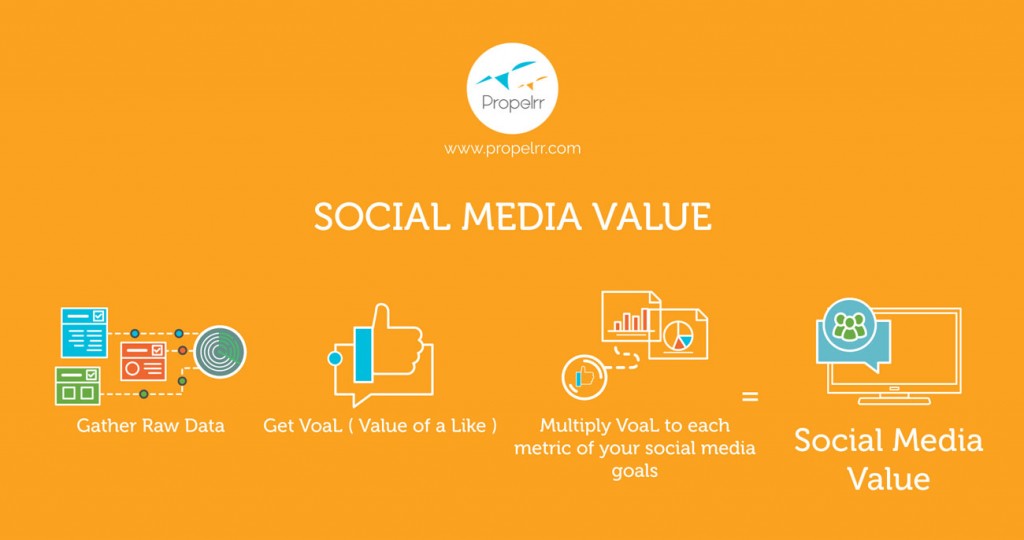
Step 4. Analyze Results and Calibrate
ROI is a powerful metric in your marketing arsenal. At this stage of the game, a multi-tiered path on analyzing and calibrating campaigns is a must.
How will you go about your social media campaign after knowing that each page like costs your business 50$? How about a $216 per page like? While it feels fantastic to have millions of page likes, comments and shares, these metric probably means nothing to your business unless they help you meet your ultimate business goal.
Social media is not a cut-and-dry tactic as some people think and it takes real integrated and data-driven strategy to go about it. As the competition grows faster than your business, you should start investing on integrated social media strategy and data analytics. Don’t go wasting your money on effort that has no justifiable return.
Over to you: What other social media strategies make you cringe and why?
Want a detailed social media value formula? Want to take a tour inside Propelrr’s data management tool? Subscribe to our newsletter and be in our guest list now!
